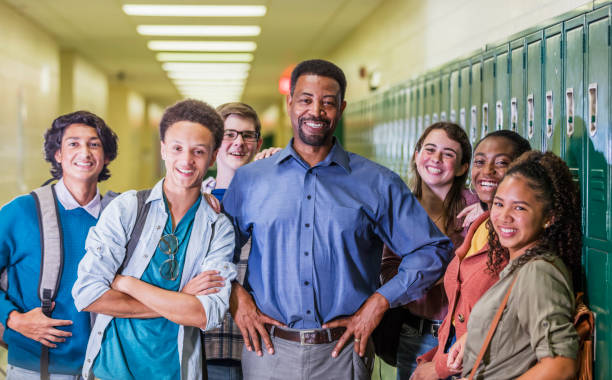What truly sets a school apart often begins with one person, the principal. A great school principal can inspire teachers, uplift students, and drive real change. But what makes a great school principal? Is it charisma, organization, or something more? As education evolves, the role of principals has shifted from administrative manager to visionary leader.
In this article, we’ll break down the key qualities of effective school leadership, backed by data, insights, and examples. Whether you’re a parent, teacher, aspiring principal, or policymaker, understanding these traits can help you support or become a truly transformational school leader.
What Does a School Principal Do?
At their core, school principals serve as instructional leaders, guiding both academic and organizational growth.
Key Responsibilities:
- Overseeing curriculum and instruction
- Managing teachers and staff
- Building school culture
- Engaging with parents and the community
- Handling budgets and policy implementation
Great principals wear many hats and juggle them all with vision, strategy, and emotional intelligence.
1. Visionary Leadership: Setting a Clear Direction
An effective principal communicates a compelling vision for student success and school improvement.
Why It Matters:
According to a study by the Wallace Foundation, 70% of effective schools have strong, visionary leadership. A clear roadmap allows the entire school community to rally around shared goals.
Example:
A principal who sets a vision like “Every child reading at grade level by third grade” focuses decisions, budget, and teacher training around one impactful target.
2. Strong Communication Skills: Listening and Leading
Communication is the backbone of effective school leadership.
Skills Great Principals Master:
- Transparent messaging with staff and parents
- Active listening to teachers and students
- Public speaking during meetings and events
What makes a great school principal isn’t just talking, but understanding, connecting, and responding to needs with clarity and empathy.
3. Emotional Intelligence and Empathy
Great principals are emotionally attuned to the needs of their school community.
Emotional Intelligence Includes:
- Self-awareness: Recognizing your own triggers and blind spots
- Empathy: Understanding what students and staff feel
- Conflict resolution: De-escalating tension calmly
Principals high in emotional intelligence build trust, reduce staff turnover, and create safer, more inclusive schools.
4. Instructional Expertise and Teacher Support
Great principals don’t just manage, they lead learning.
Instructional Leaders:
- Conduct classroom walkthroughs
- Provide timely, actionable feedback
- Encourage data-driven instruction
- Promote continuous professional development
A 2019 RAND study found that schools with strong instructional leaders outperform others by 20% in academic growth.
5. Building Positive School Culture
What makes a great school principal is the ability to create a culture of safety, equity, and engagement.
Components of a Positive Culture:
- High expectations and accountability
- Celebrating student and staff success
- Encouraging collaboration and inclusion
Case Example:
In one underperforming middle school, the new principal implemented SEL programs, student shout-outs, and restorative circles. Within two years, disciplinary actions dropped by 45% and teacher morale soared.
6. Data-Driven Decision Making
Top principals use data, not guesswork, to guide decisions.
What That Looks Like:
- Analyzing test scores to identify achievement gaps
- Using attendance data to spot early warning signs
- Tracking teacher performance to inform PD plans
Data doesn’t replace intuition, but it sharpens it.
| Metric | Used For |
|---|---|
| Test Scores | Academic intervention strategies |
| Attendance Records | Identifying disengaged students |
| Behavior Reports | Creating discipline or SEL initiatives |
7. Community and Parent Engagement
Great principals don’t lead alone, they bring stakeholders along for the journey.
Key Engagement Practices:
- Hosting town halls or coffee chats
- Sending out regular newsletters or social posts
- Encouraging volunteerism and feedback loops
Engaged families contribute to better student outcomes, and engaged communities support school funding, safety, and innovation.
Real-Life Profile: A Principal Who Transformed a Failing School
At Jefferson High, academic performance was low, staff turnover was high, and morale was rock-bottom. When a new principal stepped in:
- She implemented collaborative planning time.
- Prioritized SEL and student voice.
- Set measurable goals for reading and math scores.
In 3 years, the school jumped from the bottom 10% to the top 25% in the state.
This story illustrates how effective school leadership can completely redefine student trajectories.
Conclusion
So, what makes a great school principal? It’s not just about experience, it’s about vision, empathy, strategy, and the ability to inspire. Great principals lead by example, support their teachers, engage families, and make data-driven decisions that elevate every student. In an age where education demands more than ever, effective school leadership is the heartbeat of every successful K–12 institution. Whether you’re selecting a principal, becoming one, or supporting one, know this: Great leadership changes everything, from test scores to lives.
FAQs
1. What are the top qualities of an effective school principal?
Vision, empathy, communication skills, instructional leadership, and community engagement are top traits.
2. How does a principal influence student achievement?
By supporting teachers, setting academic goals, and fostering a safe, inclusive school culture.
3. What is instructional leadership in schools?
It refers to a principal’s role in guiding curriculum, teaching practices, and professional development.
4. How can principals build positive school culture?
By promoting respect, equity, emotional safety, and celebrating successes regularly.
5. Can a principal improve a failing school?
Yes. Strong principals turn around schools through clear vision, staff support, and strategic planning.
